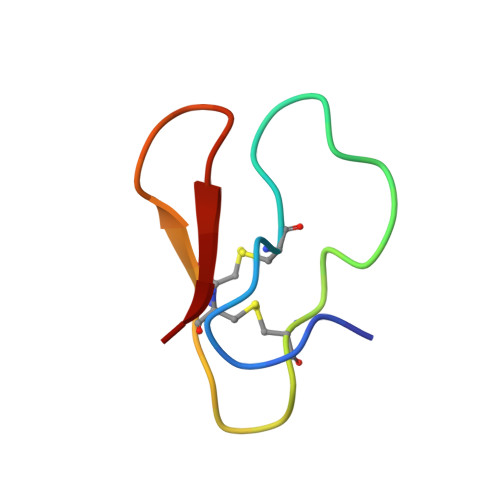Structural Insight into the Stabilizing Effect of O-Glycosylation
Chaffey, P.K., Guan, X., Chen, C., Ruan, Y., Wang, X., Tran, A.H., Koelsch, T.N., Cui, Q., Feng, Y., Tan, Z.(2017) Biochemistry 56: 2897-2906
- PubMed: 28494147
- DOI: https://doi.org/10.1021/acs.biochem.7b00195
- Primary Citation of Related Structures:
5X34, 5X35, 5X36, 5X37, 5X38, 5X39, 5X3C - PubMed Abstract:
Protein glycosylation has been shown to have a variety of site-specific and glycan-specific effects, but so far, the molecular logic that leads to such observations has been elusive. Understanding the structural changes that occur and being able to correlate those with the physical properties of the glycopeptide are valuable steps toward being able to predict how specific glycosylation patterns will affect the stability of glycoproteins. By systematically comparing the structural features of the O-glycosylated carbohydrate-binding module of a Trichoderma reesei-derived Family 7 cellobiohydrolase, we were able to develop a better understanding of the influence of O-glycan structure on the molecule's physical stability. Our results indicate that the previously observed stabilizing effects of O-glycans come from the introduction of new bonding interactions to the structure and increased rigidity, while the decreased stability seemed to result from the impaired interactions and increased conformational flexibility. This type of knowledge provides a powerful and potentially general mechanism for improving the stability of proteins through glycoengineering.
- Department of Chemistry and Biochemistry and BioFrontiers Institute, University of Colorado , Boulder, Colorado 80303, United States.
Organizational Affiliation:
















